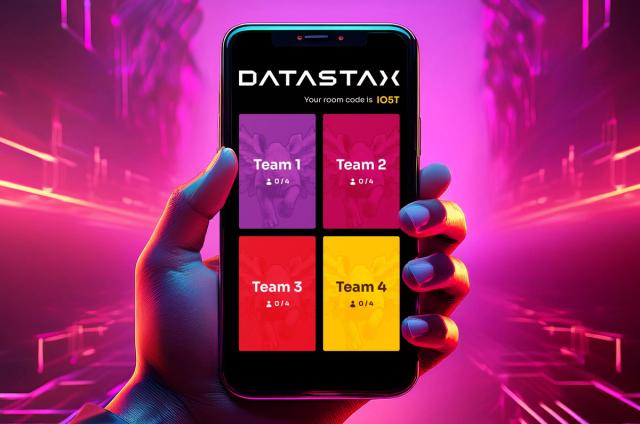Achieving Geo-Distributed Data Management in Hybrid Cloud

As an architect, chief information officer, chief digital officer, or chief data officer, you probably already know the power and value of hybrid cloud. For most enterprises, hybrid cloud has become a strategic imperative for driving innovation, reducing time to market, and extending self-service applications to lines of business. In 2016, 73 percent of enterprises had a hybrid cloud strategy, according to IDC.
But strangely enough, most IT leaders are still pretty confused about what to do with their hybrid cloud environments and how best to exploit them. A lot of this confusion centers around applications — specifically, powerful, geo-distributed applications and how to manage the data around these applications when it’s in a hybrid cloud environment.
First, let’s make sure we’re clear on the definition of “hybrid cloud” and the difference between “hybrid cloud” and “multi-cloud”.
What is the Hybrid Cloud?
There are various definitions of “hybrid cloud”. Gartner defines it as “policy-based and coordinated service provisioning, use and management across a mixture of internal and external cloud services.” Amazon Web Services defines it as “the integration of on-premises resources with cloud resources.” IBM defines it as the use of “a private cloud foundation combined with the strategic integration and use of public cloud services.”
However you want to word it, we can probably all agree that “hybrid cloud” means some combination of on-premise resources (which may or may not be a private cloud) with the public cloud.
People often confuse “hybrid cloud” with “multi-cloud”. While they overlap in many ways, they are not one in the same. Where hybrid cloud is about combining on-premise resources with the public cloud, multi-cloud is the strategic ability to use cloud services from more than one provider at any given time, whether it’s using multiple public clouds, the public cloud plus a private cloud, different public clouds combined with various SaaS offerings, or various combinations thereof.
So in a sense, “hybrid cloud”, when it combines public and private clouds, is really a type of multi-cloud environment — one that happens to be extremely popular and very much in the public mind, or at the least the mind of enterprise IT professionals, at the moment.
How Do You Achieve Geo-Distributed Data Management in a Hybrid Cloud Environment?
Hybrid cloud environments are complex, and this complexity tends to (rightfully) make people like chief information officers extremely nervous, especially when it comes to handling data for powerful, customer-facing, geo-distributed applications.
To calm your nerves a little, it would probably help to spell out exactly what you need, from a data management perspective, to competently and successfully manage geo-distributed apps in a hybrid cloud environment.
1. “CARDS”
First, to get the most out of a hybrid cloud environment, from an application perspective, your data management platform absolutely must be able to support customer-facing applications that are “CARDS”, that is, Contextual, Always on, Real time, Distributed, and Scalable. And to do this, your data management platform must of course be all of the above as well — contextual (integrating data from all touchpoints), always on (100% uptime), able to process data and provide insights in real time, and easily and affordably scalable.
2. Data autonomy
Your data management strategy — and data management platform — must also provide data autonomy. Having data autonomy means having the ability to retain control over your data so that your data remains “cloud-agnostic”. This gives you the flexibility to manage your data and apps on any public or private cloud, on your own data center, or on any combination thereof, independent of the underlying infrastructure.
Want to run your data platform on Linux? Go ahead. Want to put in on Docker or a VM? All clear. Want to plunk it onto one of the “Big 3” public cloud providers or even in run it on a Platform as a Service (PAAS) environment? The green light is on.
Keep in mind that a major aspect of data autonomy addresses one of the biggest concerns enterprises have about using hybrid cloud: security. Having data autonomy means not having to worry about a competitor being able to access your most critical and private data, or holding it hostage. It also means being agile and adaptable when market changes ask you to quickly switch cloud providers. You also will get the advanced security options of your data platform of choice. Look for commercial patches (including backporting of fixes), expert customer support, security alerts, and key features such as end-to-end encryption and auditing.
3. Having deployment options
Finally, you want your data management platform to give you different deployment options so that when and if things do get over-complicated from hybrid cloud use, you have the option of handing the headaches over to the experts. But sometimes you also want more control and want to be more hands-on. In this sense, being able to choose between a self-managing option or a fully managed white-glove service is key to being able to handle geo-distributed apps in hybrid cloud.
With so much hype around hybrid cloud these days, it can be easy to just hit “go” without fully thinking things through. Generally speaking, your board isn’t going to understand the complexities or value of hybrid cloud, so it’s going to be up to you to explain it to them, and you can bet that if something goes wrong with your hybrid cloud use, they will be pointing their fingers at you. So, of course, how you go about setting up your hybrid cloud environment is a major decision, as is which data platform you choose to support your hybrid cloud environment so that you can get the most out of it.

The Perfect Hybrid Cloud Infrastructure
New eBook explains how digital disruptors like Microsoft Office 365, Komatsu, and IHS Markit are leveraging the DSE+Azure hybrid cloud to build game-changing applications built for the Right-Now Economy.




